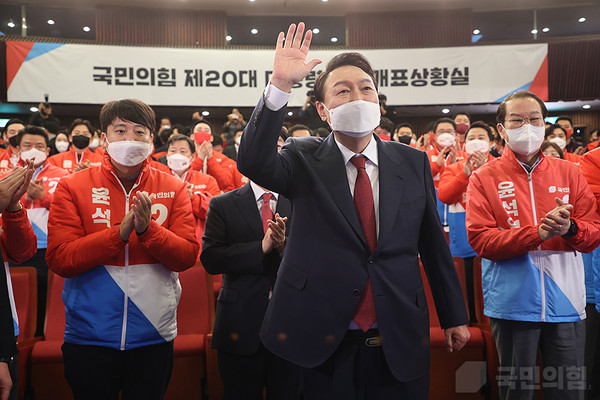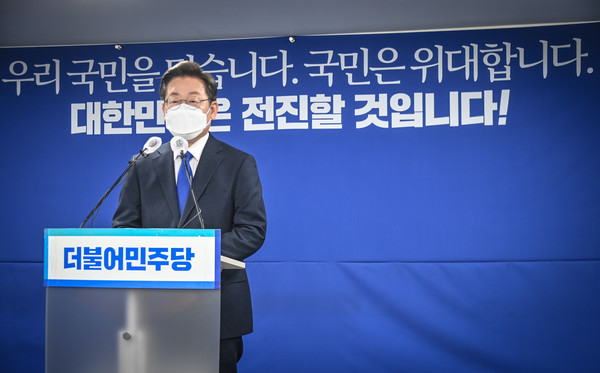What the South Korean 20th presidential election left behind

EVERY FIVE years in South Korea, the presidential election brings along a variety of political discourse and controversies. Despite being the 20th domestic presidential election, it would not be an exaggeration to say that the recent unfolding of events has been unprecedented. With two leading presidential candidates embroiled in significant disputes over their private lives and past behaviors, the election transformed into a mudslinging competition—leading to the disappointing end of having to choose between two “unlikables[1].” Ultimately, Yoon Suk-yeol from the People Power Party, was elected president after a neck-and-neck competition full of commotion. Deeper analysis of the campaign process, voting population, and election results reinforces the notion that South Korean society has embarked on a journey to a new political paradigm.
The candidates
The 20th presidential election campaign saw four major candidates from different parties competing to win the people’s votes. Lee Jae-myung, the first candidate, represented the ruling Democratic Party. Climbing his way up from an underprivileged background as a child laborer, Lee was a human rights lawyer and a civic activist prior to entering politics. He also served as the mayor of Seongnam-si and then as the governor of Gyeonggi-do. Despite being the ruling party’s candidate, Lee was unafraid to criticize some of incumbent President Moon Jae-in’s policies, specifically in terms of real estate market policies[2].
Yoon Suk-yeol—the second candidate—represented the conservative opposition party, the People Power Party. As a public prosecutor, Yoon contributed to the conviction of former president Park Geun-hye in her impeachment trial. Although having been appointed Prosecutor General of South Korea in 2019 by President Moon, Yoon sided with the opposition party for this election, advocating for a regime change. As such, he became the presidential candidate only five months after entering politics.
Sim Sang-jung, the third candidate, was from the Justice Party. As a former factory worker, Sim was at the front lines of the labor rights movement for 25 years. She represents laborers and is a supporter of social minorities’ rights, especially those of LGBTQ+ and women. Nevertheless, overpowered by the dominant two-party system in Korean politics, Sim’s approval rate stayed at around 3% until the election day[5].
The fourth candidate, Ahn Cheol-soo, was from the centrist opposition People’s Party. After emerging as a politician in 2011 as a doctor, IT expert, and college professor, Ahn has a relatively stainless image. With his approval rate having increased to the 10% range since last year[3], Ahn was considered to be a candidate who could disrupt the two-way race between Lee and Yoon. However, only six days before the election day, he merged his campaign with Yoon to achieve a single candidacy that could stand against the ruling party[4], shocking the nation and his supporters.
Main policies
Lee and Yoon, essentially the main contenders of this election since the beginning, held contrasting views on major policies and agendas. In an interview with The Yonsei Annals, Cha Jae-won, a political commentator and a professor at the Catholic University of Busan, explained that Lee mainly targeted working-class voters through his universal welfare system proposal while Yoon specifically targeted i-dae-nam[6] by addressing gender issues. In particular, they clashed on three core issues: real estate, gender equality, and diplomacy.
Demands for the legislative reform of President Moon’s real estate policies were very high due to skyrocketing house prices throughout his administration, making real estate an important topic for both leading candidates. Lee and Yoon both supported relieving the possession and transfer taxes, easier redevelopment and reconstruction, and ample housing supplies; however, details of the policies such as the conditions and degree of alleviation differed between the candidates[7].
It is fair to say that the gender issue visibly arose as the crux of the battle between Lee and Yoon. The candidates had contrasting answers to even the most basic questions regarding gender inequality. For instance, when questioned about the existence of structural sexism in Korea, like the gender wage gap, Lee acknowledged gender inequality in Korean society and promised institutional changes, while Yoon asserted that there is no such thing[8]. In fact, Yoon pledged to abolish the Ministry of Gender Equality and Family, criticizing its unfairness to men and thereby gaining the enthusiastic support of i-dae-nam[9]. On the other hand, Lee suggested reorganizing the ministry in order to alleviate gender conflicts.
Furthermore, Lee and Yoon held different views on diplomacy and international relations. Regarding the declaration of the end of the Korean War—which was an actively discussed issue earlier this year—Lee supported President Moon’s initiative, considering both the United States and China important actors in the situation[10]. In contrary, Yoon stood against the end-of-war declaration, suggested denuclearization as the essential precondition for a peace treaty, and placed more emphasis on South Korea’s alliance with the United States than with China[10].

D-day
The long-awaited 20th presidential election took place on March 9, 2022. This election ended up being the closest ever in South Korean history, even setting other remarkable records in terms of voting rates. The early voting period, held from March 4 to 5, had a 36.93% voter turnout—the highest of all time. In total, 77.1% of the nation casted a ballot, which was just 0.1% less than the previous presidential election. Due to the evenly matched battle between Lee and Yoon, the result remained too close to call even when voter percentage reached 95%; Yoon was proclaimed the clear winner at around 4 a.m. the next day[11]. The election ended with the least difference in votes in Korea’s history: 0.7% or 250,000 votes. While Yoon won 48.56% of the vote, Lee won 47.83%. Cha commented that the mere 0.7% difference indicates the people’s disapproval of the previous ruling power, which in turn means that the new ruling power could also be replaced in the next election.
Some believe that Yoon benefitted from the role socioeconomic status played in voting, as he gained votes from high-income citizens who were discontent with rising real estate tax rates under the current government[11]. Moreover, with the prolonged pandemic and worsening economic situation, retrospective voting—looking back at the performance of the incumbent party in power––contributed to Yoon’s victory[11]. Others point out that Yoon utilized hatred and exclusion to win the election, specifically profiting from gender issues in Korean society to gain votes[12].

* * *
The 20th presidential election revealed the divisions and conflicts in South Korean society that influenced voters. People in their twenties were especially divided; 58% of men voted for Yoon while 58% of women voted for Lee[13]. Cha mentioned how the public wants to resolve the current insurmountable division between the different political parties and achieve genuine institutional reform for national integration. Reflecting on what the 20th presidential election left behind, it is up to us to prevent electoral politics from further exploiting and thriving upon harmful social divisions.
[1] The New York Times
[2] The Washington Post
[3] The JoongAng Ilbo
[4] Seoul Daily
[5] The Korea Economic Daily
[6] I-dae-nam: A term that originates from i-sip-dae nam-ja, which means “men in their twenties;” The term incorporates all voting men in the age range of late teens to early thirties.
[7] Maeil Business Newspaper
[8] Chosun Biz
[9] The Hangyoreh
[10] Financial News
[11] Yonhap News
[12] Oh My News
[13] Sisa Journal

